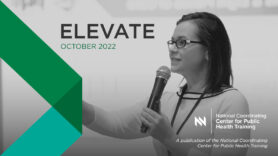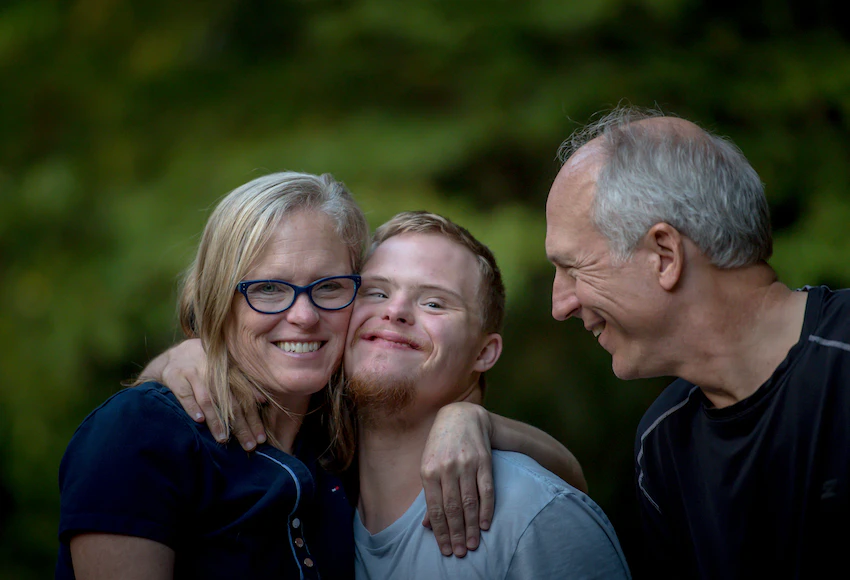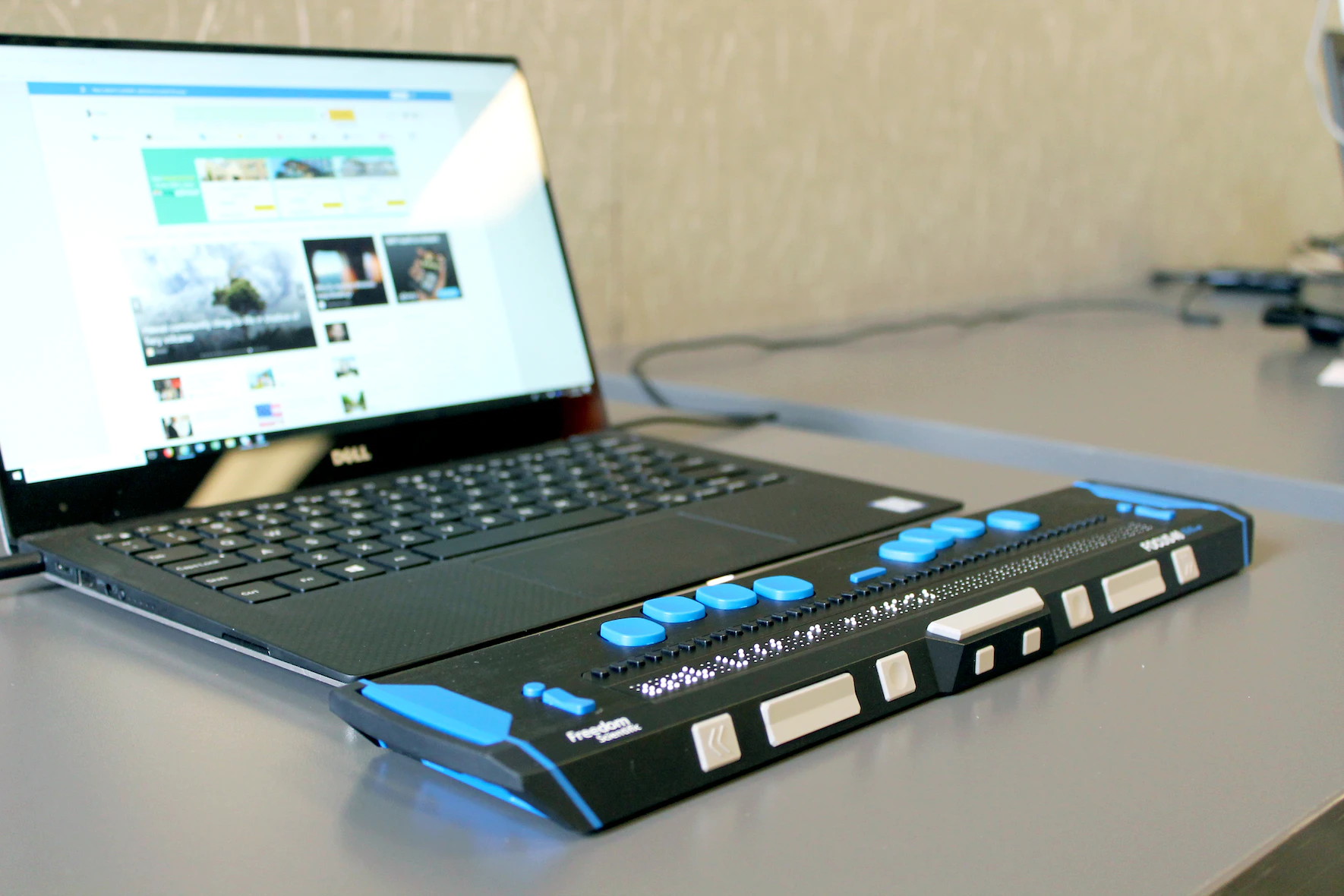Leading the Way by Building a Culture of Accessibility in Public Health Organizations
- By: Rebecca Wells, PhD, MSW, MPH and Lauren Milliken, MSW, MPH
- Date
Kiara was only four months into her new role as the Region 2 Department of Health emergency preparedness coordinator. She was attending a large region-wide in-person meeting—the first in-person gathering in over two years. Driving to the meeting, she thought how nervous she would be around so many colleagues she didn’t know yet.
The meeting started promptly at 9:00 a.m. when the regional director, Dr. Smith, called everyone to order. Dr. Smith had used a microphone at the podium to address the crowd, but now the group had shifted into team-building activities led by an outside facilitator who traveled around the room. The facilitator seemed engaging and charismatic, but he opened the activities by asking if everyone could hear him, saying he wouldn’t need to use the microphone because he had a loud voice.
Kiara’s MPH internship and part-time work had been at a university disability center. She realized that failing to use a microphone was a major accessibility issue for people in the room who were hard of hearing or far away from the speaker. She learned to speak up about such issues in her graduate training, to be both an ally and an accomplice with both clients and colleagues with disabilities. With a fluttering heartbeat, she raised her hand to speak. She knew failing to mention this issue in the meeting would be a missed opportunity to raise awareness around these issues and contribute to a culture of inclusion. The facilitator saw Kiara’s raised hand and called on her. “Here goes,” Kiara thought.
Whether for our colleagues or people being served by our programs, we all have a role to play in making our workplaces and events more accessible. Leadership around diversity, equity, and inclusion issues like accessibility can take place at all levels of an organization if we are willing to use our voices to bring awareness to these issues and promote access in our work.
The Centers for Disease Control and Prevention (CDC) estimates that 24.8 percent of Americans have some disability in domains like mobility, cognition, independent living, hearing, vision, or self-care (1). People with disabilities experience several health disparities compared to their nondisabled peers, including higher rates of chronic conditions like heart disease and diabetes, higher rates of obesity, higher smoking rates, and reduced access to health care services and health promotion programming (2). Furthermore, a much higher rate of people with disabilities (25.9%) live in poverty compared to people without disabilities (11.4%) (3).
Health disparities experienced by people with disabilities often result from societal barriers that prevent people with disabilities from fully participating in society and accessing necessary resources to promote and maintain health. These include physical barriers like the absence of an accessible scale at a local health clinic, communication barriers like a lack of interpreters or accessible educational materials that reach out to people with a range of abilities, or attitudinal barriers that assume “disability” automatically equals “poor health” (4).
A broad-based approach focused on including people with disabilities in existing public health efforts is needed to improve and eliminate health disparities. Public health leaders at all levels are responsible for considering the functional access needs of all people, including people with disabilities, in their work.
One way to do this is by learning and practicing the principles of Universal Design, a framework created by Ronald Mace and colleagues, that helps design “products and environments to be usable by all people, to the greatest extent possible, without the need for adaptation or specialized design” (5.) This framework has been used in architecture, technology, information dissemination, event planning, and learning and cognition to ensure access for audiences and users. Public health leaders can incorporate this framework into our work as we plan programming and events (both virtual and in-person), create, and disseminate electronic and physical communications, and engage community stakeholders with disabilities.
- Familiarize yourself and your team with federal laws that protect the civil rights of persons with disabilities and promote their full participation in society. The CDC’S Disability and Health website is a great place to begin learning about Section 504 of the Rehabilitation Act, the Americans with Disabilities Act, and the Affordable Care Act. Determine ways you and your organization can go beyond compliance to genuinely promote full inclusion and participation of people with disabilities in your programming and workplaces.
- When planning in-person events, consider the needs of people with disabilities. Use a microphone, set up tables and chairs in a way that can accommodate those with mobility limitations, and solicit accommodation requests from attendees in advance. Cornell University’s “Accessible Meeting and Event Checklist” is an excellent resource.
- When planning virtual events, including webinars and conferences, event planners should also consider the needs of people with disabilities. To meet these specific needs, event planners might consider using a sign language interpreter, captioning event content in real-time, or providing audio-description for blind attendees. The American Bar Association, S Food and Drug Administration, and the American Evaluation Association offer valuable resources for planning virtual events.
- Provide electronic communications in multiple formats. This includes providing text-only versions of essential documents or providing alt-text for pictures so a blind person or people with low vision can use a screen reader to access the information. For more tips on web accessibility and electronic communications, visit the Cal State University, Northridge Universal Design Center website.
- Consider the language preferences of people with disabilities and ensure your publications speak respectfully about disabilities. A few resources to learn about disability language include the National Center on Disability & Journalism’s Disability Language Style Guide and this article on Disability Language Guidance from the National Association of County and City Health Officials.
- Provide plain language summaries for communications. Plain Language makes information more accessible to everyone. It is a clear and straightforward way of communication designed to ensure all people can understand and participate equitably. Here is a checklist to meet plain language standards for both written documents and web-based content.
The needs of people with disabilities must be considered at all levels of an organization—from new employees to senior leadership. As Donald H. McGannon reminds us, “Leadership is an action, not a position.” Some leaders and organizations will need to take small steps toward accessibility and slowly incorporate these best practices into their work. Others with more experience in accessibility and Universal Design will need to stay up to date with best practices and incorporate new findings.
It is important to remember that we won’t be able to get it right every time. When we miss the mark, we must accept constructive stakeholder feedback and learn from our mistakes. Ideally, we can plan events and programming in consultation with stakeholders with disabilities. When we are proactive and use a Universal Design approach to “bake” accessibility into our work, we will better meet the diverse needs of our stakeholders so that we can improve, promote, and protect the public’s health.
References
- https://dhds.cdc.gov
- https://www.cdc.gov/ncbddd/disabilityandhealth/infographic-disability-impacts-all.html#text-version
- Page 15 of https://disabilitycompendium.org/sites/default/files/user-uploads/Annual%20Report%20for%20Print.pdf
- https://www.cdc.gov/ncbddd/disabilityandhealth/disability-barriers.html
- https://projects.ncsu.edu/ncsu/design/cud/about_ud/udprinciplestext.htm
About the Authors:




 Subscribe To Our Communications
Subscribe To Our Communications